Anodize process controllers have provided decades of service to the Anodizing industry. In order to aid our customers with improving their quality, consistency, and compliance, we have dedicated a lifetime to developing anodize process controllers.
Each process controller consists of a processor, control circuit, and a touch screen display. The controllers deliver accurate and consistent process runs automatically. All controllers can meet specific military, aerospace, and Nadcap audit requirements depending on the client’s specifications. We also offer upgrades to any standard SCR rectifier as part of complete remanufacture or as an addition to new power supplies.
Additionally, we provide VPN interface with the controller for remote diagnostics and program updates. The touch screen and enclosure are NEMA 4x-rated and all components are designed to meet and withstand the anodizing process.
TYPES AND FEATURES
CONTROLLER TYPES
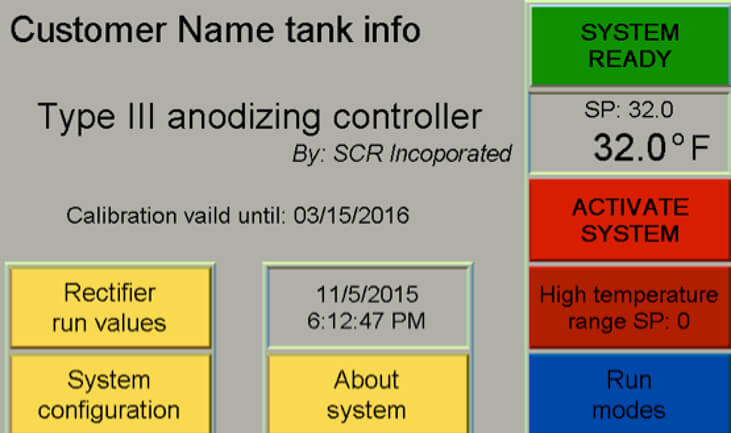
Anodize controllers are specifically designed to maintain a repeatable process for Nadcap accredited facilities. Due to the repeatable anodizing process features, the controllers can provide enhanced color-matching capabilities. Additional features and design characteristics include the ability to assist the extrusion anodizing industry. As a 720 rule-based current density controller, it also automatically calculates run times for coding weights and thickness.
ALUMINUM
Mil/Aerospace/Commercial/Automotive
TYPE I: Boric, Tartaric Sulfuric, Phosphoric
- Boric Specs: BAC 5632
- Tartaric Specs: 80-35-2010
- Phosphoric Specs: BAC 5555
Mil/Aerospace/Commercial/Automotive
TYPE II: Hard Anodize
- Extrusion Anodizing 720-rule
Mil/Aerospace/Commercial/Automotive
TYPE III: Hard Anodize
Mil/Aerospace/Commercial/Automotive
TITANIUM
- Color
- Type II
- EP (Electro Polish)
Aerospace/Medical
CONTROLLER FEATURES
Our controllers are specifically designed to maintain a repeatable process for Nadcap accredited facilities.
SMART FAULT – Abnormal Condition Detection
- Burn prevention
- Temperature variance
- Insufficient voltage/current
- Open/short circuit
MACHINE INTERLOCKS
- Temperature
- Cooling
- Overload
AUDIBLE ALARMING
- Pre-Finish
- End of Cycle
- Fault
EVENT HISTORY LOG
- End of Cycle Review
- Operational Parameter Captured
MULTIPE RUN MODES
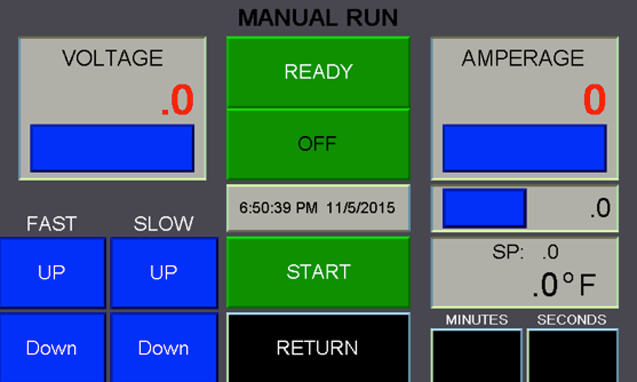
Manual Mode
The manual control feature allows the user to adjust the voltage and current set points by entering values or utilizing the increase/decrease buttons. This mode is available for RND (research and development), developing automatic runs, and custom one-off applications.
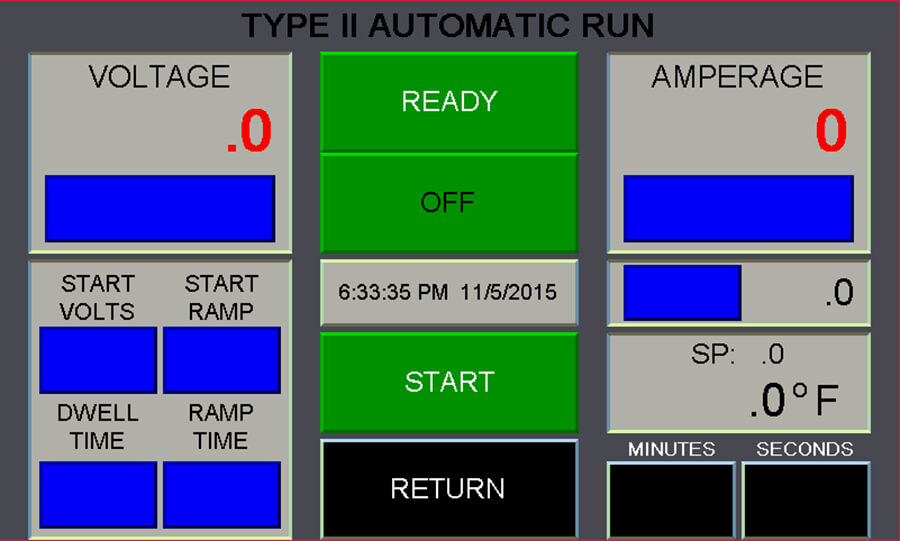
Type II
Upon selecting the profile and starting the process, the controller automatically adjusts the DC output.
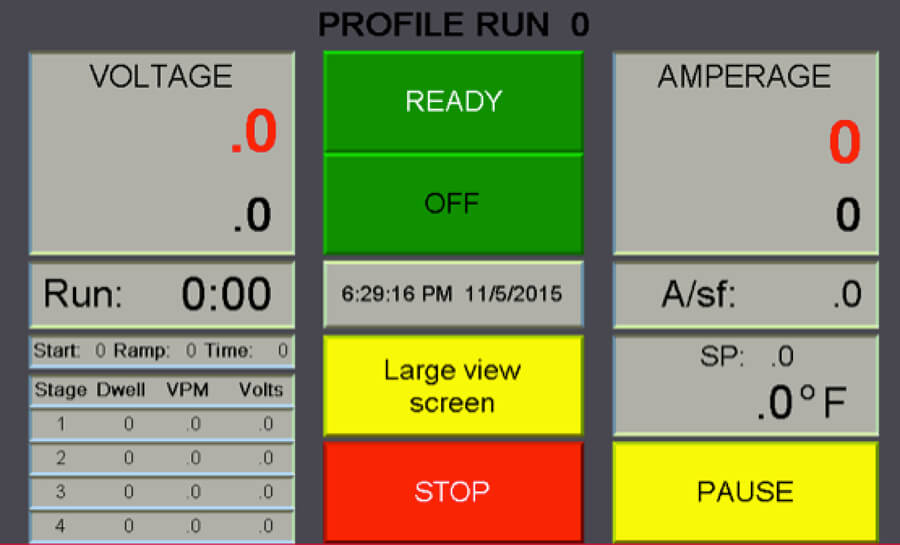
Profile Mode
Process specific profiles are preconfigured into the controller. The user can configure multiple process specific profiles and each profile contains multiple steps:
- Dwell time, ramp rate, target voltage
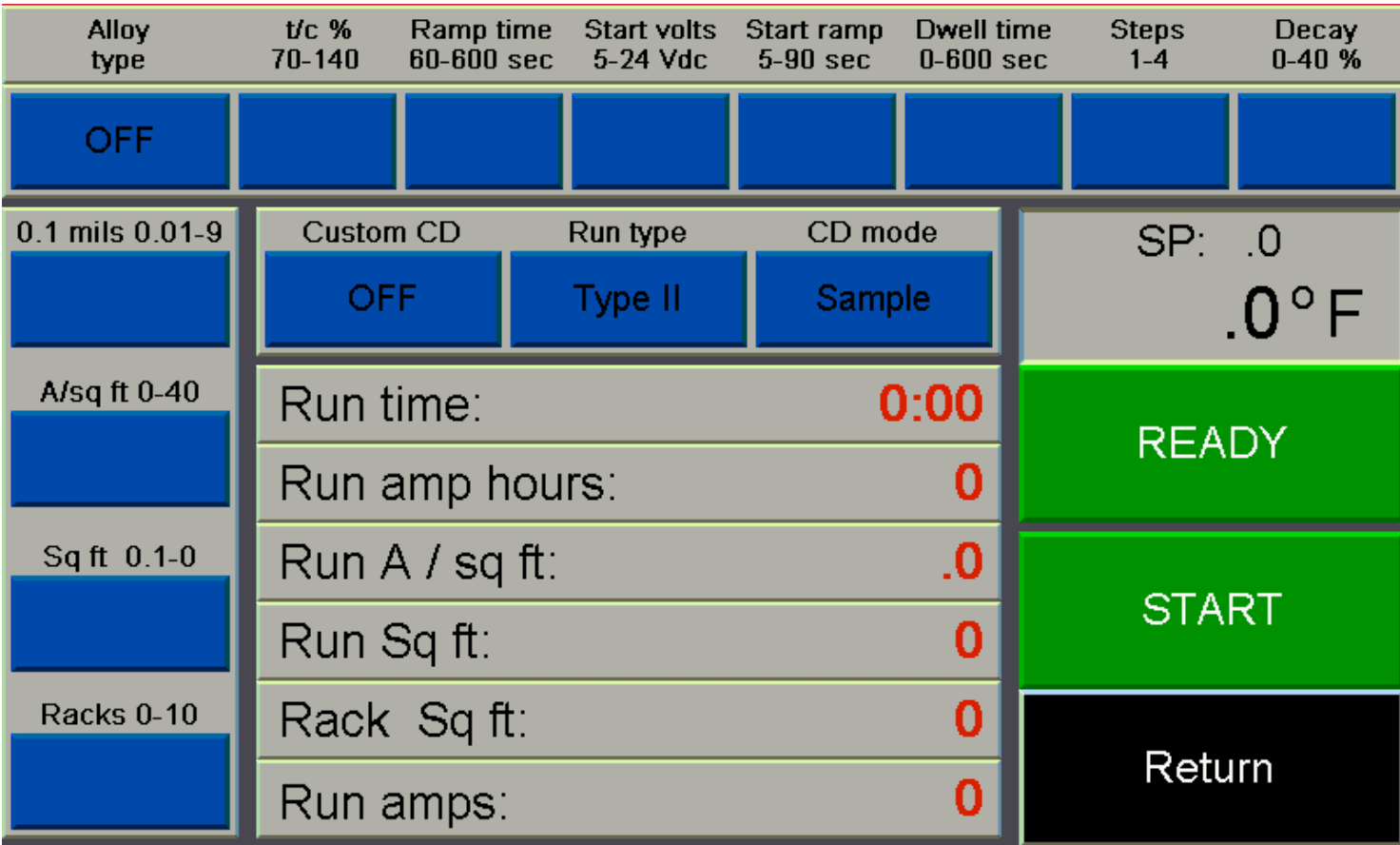
Current Density Mode
As a 720 ruled based automatic current density controller, it has the ability to calculate the time needed to achieve the desired coding weight. Current density can be established by known square footage or current density meter.
ADDITIONAL MODES are available for standard and built-in controllers. Please contact us for more information.
ADDITIONAL FEATURES
- Temperature Compensation
Automated compensation for bath temperature fluctuation - Amp-Hour Totalizer
- Ripple Monitoring and Readout
- Network Interface
- Current Density Meter
CALIBRATION
The calibration screen tracks the calibration date, technician, and due date of the controller.
The following modes are available:
None: The system will not track the calibration.
Display only: If the calibration due date is prior to the current date, the display will only indicate via a red flashing banner.
Operation restricted: If the calibration due date is prior to the current date the control operation will be prohibited.
The Alert date will trigger a yellow display indicating the calibration is coming due.
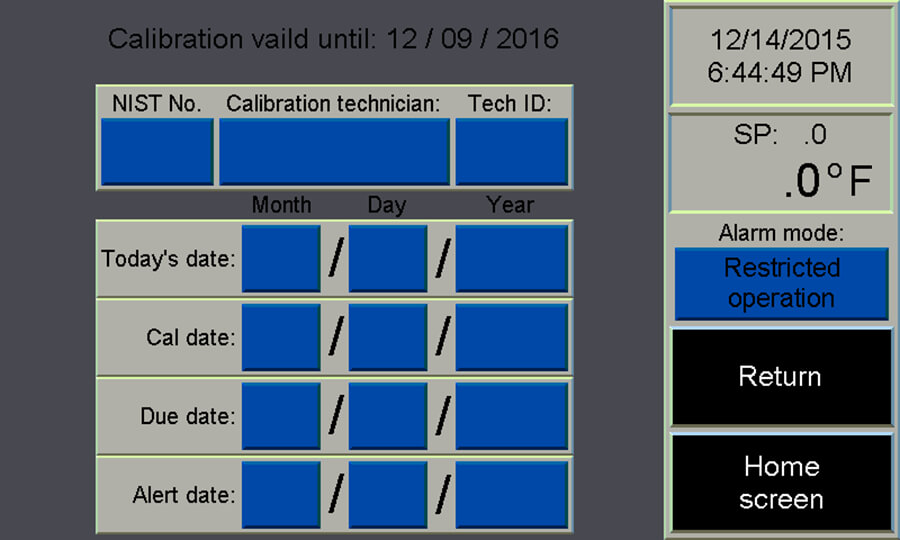
OBJECTIVE EVIDENCE
Successful completions of auto mode or profile mode cycles are logged in system memory. Users are able to review and download the event history for record keeping and audit compliance.
IMPROVE QUALITY CONTROL
- Consistency and reliability
- Reduced waster from excess coating
- Consistent cycles provide consistent pore structure of anodic coating
- Consistently pass quality tests
- Taber abrasion
- Salt spray
- Rockwell hardness
- Tape pull test

